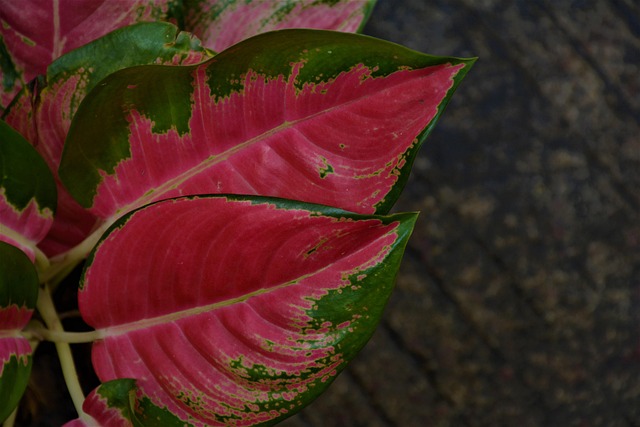Terrariums and moss walls bring nature indoors, offering unique, self-sustaining ecosystems that enhance spaces with texture and color while requiring minimal maintenance. Popular in the indoor jungle design trend, these elements improve air quality, reduce stress, and boost productivity, making them ideal for homes or offices. Creating one involves gathering essential tools, designing plant placement, and considering decorative elements. Proper care includes regular misting, balanced watering, diffused sunlight, fertilization, and cleaning to maintain a thriving micro-ecosystem.
“Bring nature indoors with the captivating allure of terrariums and moss walls—a trend that’s transforming spaces into vibrant, low-maintenance oases. This article explores these unique artistic accents, offering a comprehensive guide on how to integrate them seamlessly into your interior. From understanding the basics and reaping benefits like improved air quality, to creating your own thriving ecosystems with design tips and essential care instructions, discover why embracing an indoor jungle is a refreshing choice for any home.”
Understanding Terrariums and Moss Walls: A Green Accent Guide
Terrariums and moss walls are creative ways to bring nature indoors, offering a unique twist on traditional houseplant decor. These living accents combine elements of landscaping and art, creating miniature ecosystems that can enhance any indoor space. A terrarium is essentially a sealed container housing plants, soil, and sometimes even small animals, mimicking a self-sustaining environment. On the other hand, moss walls involve crafting vertical gardens using moss and various plant species attached to a backing, resulting in an aesthetically pleasing green feature.
Both options cater to modern aesthetics, especially the popular indoor jungle design trend. They provide an opportunity for individuals to cultivate their own microclimates while adding texture and colour to their homes or offices. With minimal maintenance, these creative displays can thrive and evolve over time, becoming striking focal points in any room.
Benefits of Incorporating Indoor Jungle Design Elements
Incorporating indoor jungle design elements offers a myriad of benefits that extend beyond mere aesthetics. By bringing the outdoors inside, these designs enhance air quality by absorbing toxins and releasing oxygen through photosynthesis. The lush greenery also contributes to improved mental well-being, reducing stress levels and increasing productivity, making them ideal for homes, offices, or any space seeking a touch of tranquility. Additionally, indoor jungles and moss walls require minimal maintenance compared to traditional houseplants, making them low-effort ways to liven up interior spaces.
Creating Your Own: Tools, Materials, and Design Tips
Creating your own terrarium or moss wall is an exciting way to bring a touch of nature indoors, fostering a thriving micro-ecosystem and adding a unique artistic accent to your space. The process involves gathering the right tools and materials, careful design considerations, and a bit of patience.
For a successful project, you’ll need essential tools like a variety of containers (glass jars or terrarium kits), activated charcoal, peat moss, various types of soil suitable for plants, small gardening tools such as spoons and rakes, and an array of miniature plants (succulents, ferns, mosses). Design tips include considering the desired aesthetic—a lush indoor jungle with towering plants or a more delicate, ethereal display. Plan the placement of each plant, ensuring proper spacing, and experiment with different heights to create depth and visual interest. Don’t forget to incorporate decorative elements like small rocks, shells, or figurines to enhance the overall design.
Caring for Your Indoor Rainforest Ecosystem
Maintaining an indoor rainforest ecosystem, or a terrarium or moss wall, requires thoughtful care to ensure its longevity and vibrancy. Regular misting is crucial to replicate the natural humidity these plants thrive on. A balanced watering schedule is essential; overwatering can lead to root rot, while underwatering causes the plants to wilt. Many indoor jungles also benefit from diffused sunlight, so placing them near east or south-facing windows, or using grow lights, can help keep the foliage lush and vibrant.
Fertilization plays a vital role in sustaining your green accent. Using a diluted, balanced liquid fertilizer every 4-6 weeks during the growing season will provide necessary nutrients without overwhelming the delicate ecosystem. Regularly cleaning the glass of any dust or algae buildup ensures optimal light penetration, fostering healthy plant growth. Remember that these self-contained ecosystems require patience and observation; note their responses to your care, making adjustments as needed to nurture a thriving indoor jungle design.
Terrariums and moss walls offer a unique way to bring the outdoors in and create captivating indoor jungle design elements. By understanding the basics of these living art forms, you can cultivate your own miniature ecosystems, enhancing your space with lush greenery and a touch of artistic flair. With the right care and attention, your indoor rainforest ecosystem will thrive, providing a serene and vibrant ambiance for years to come.
